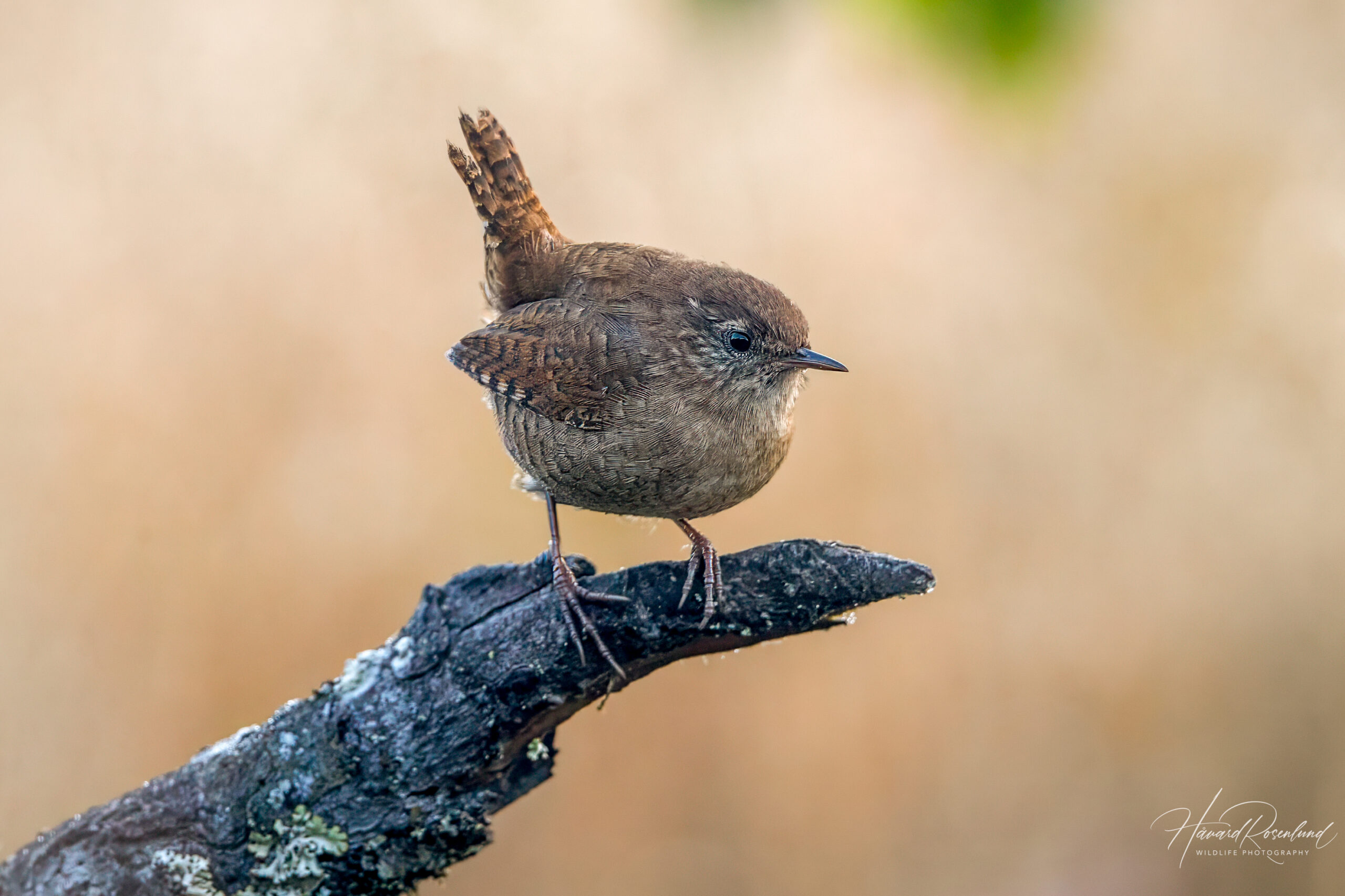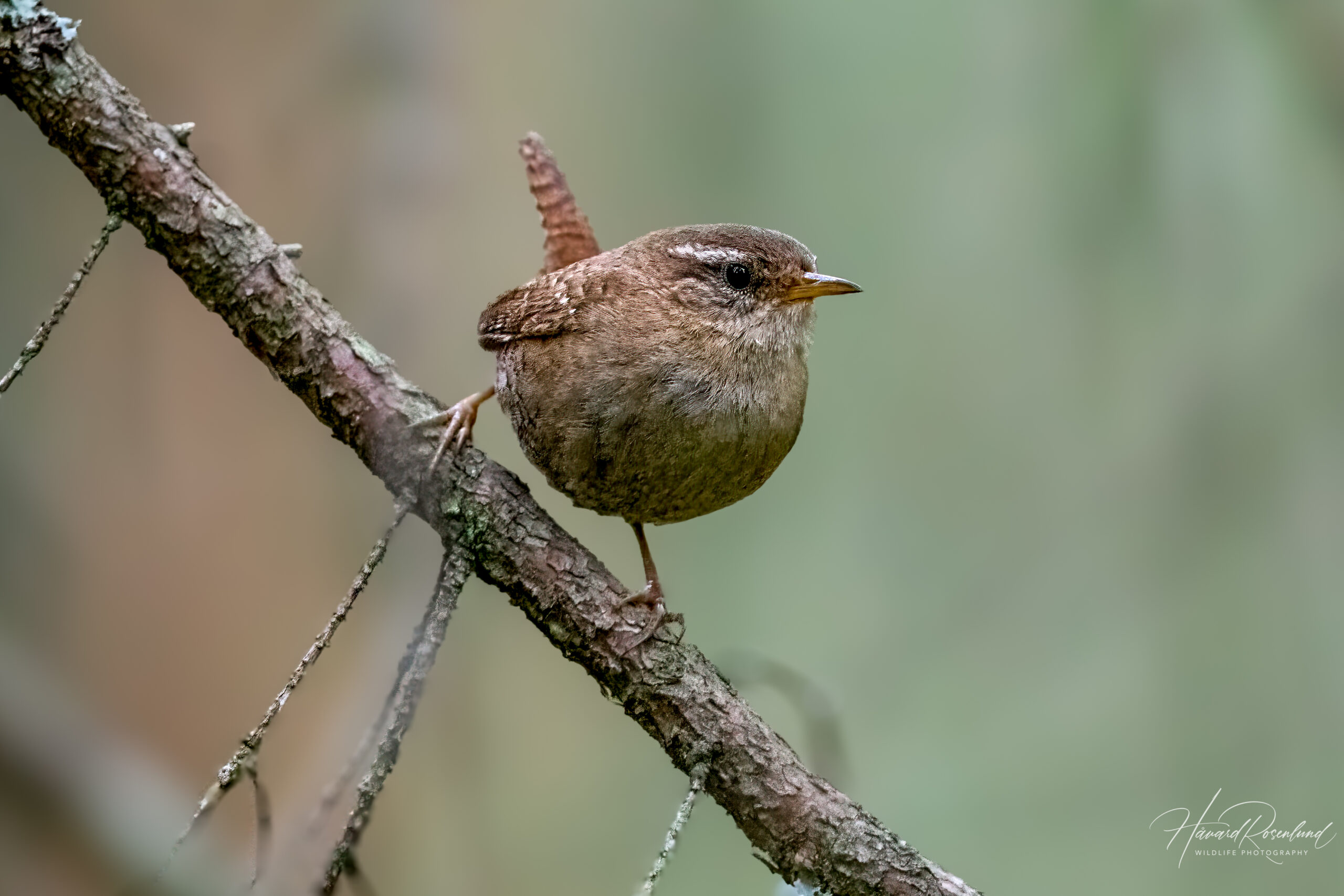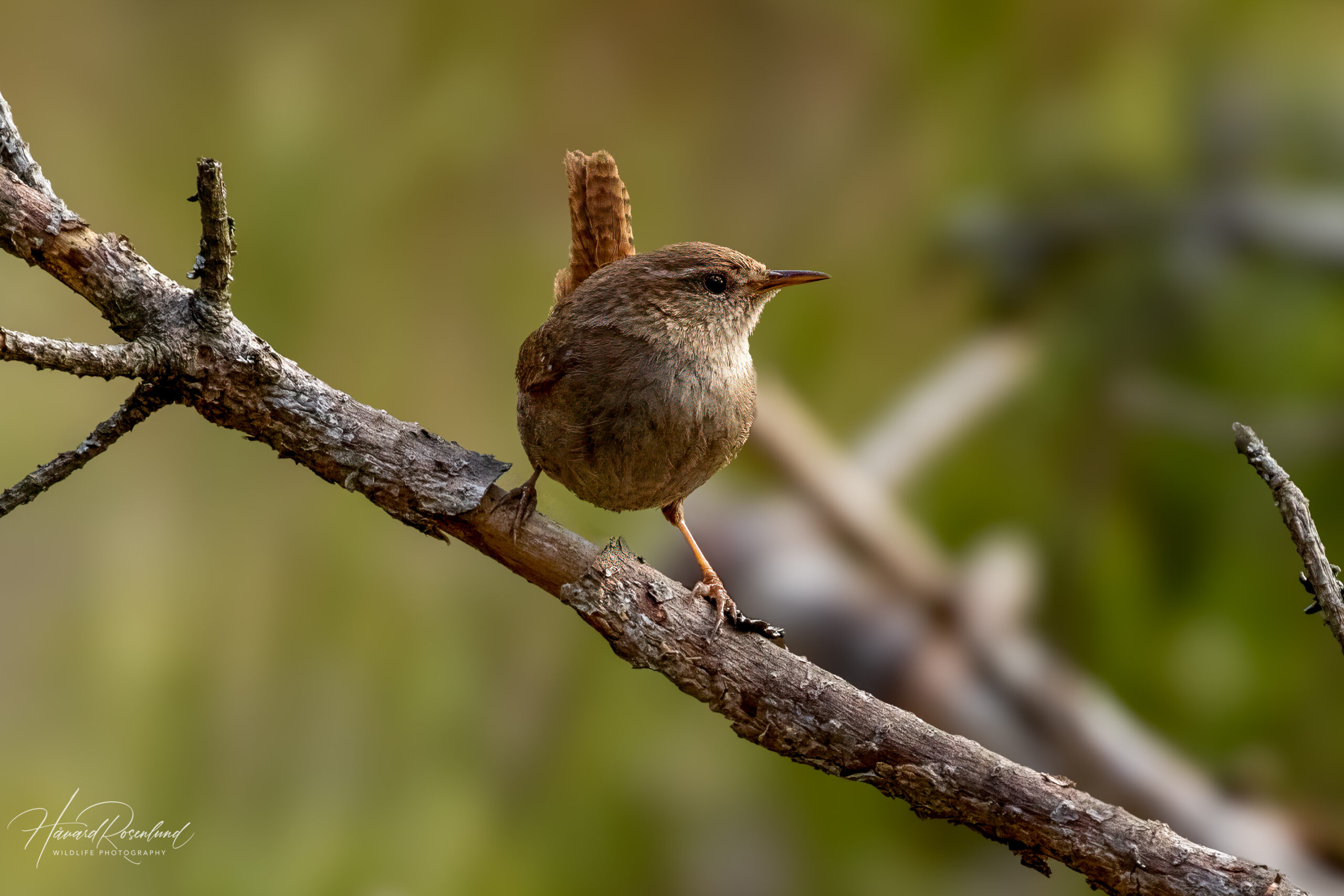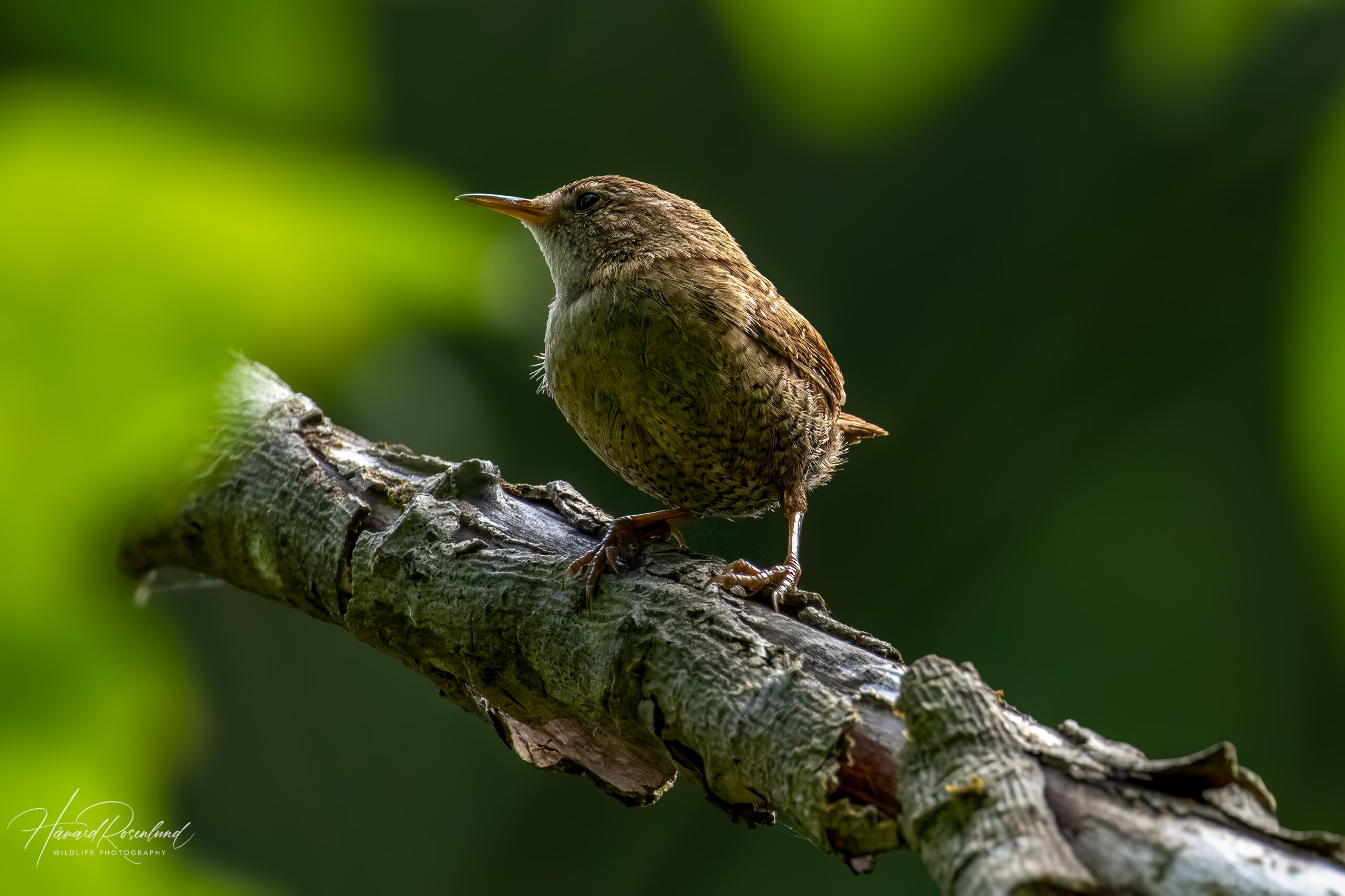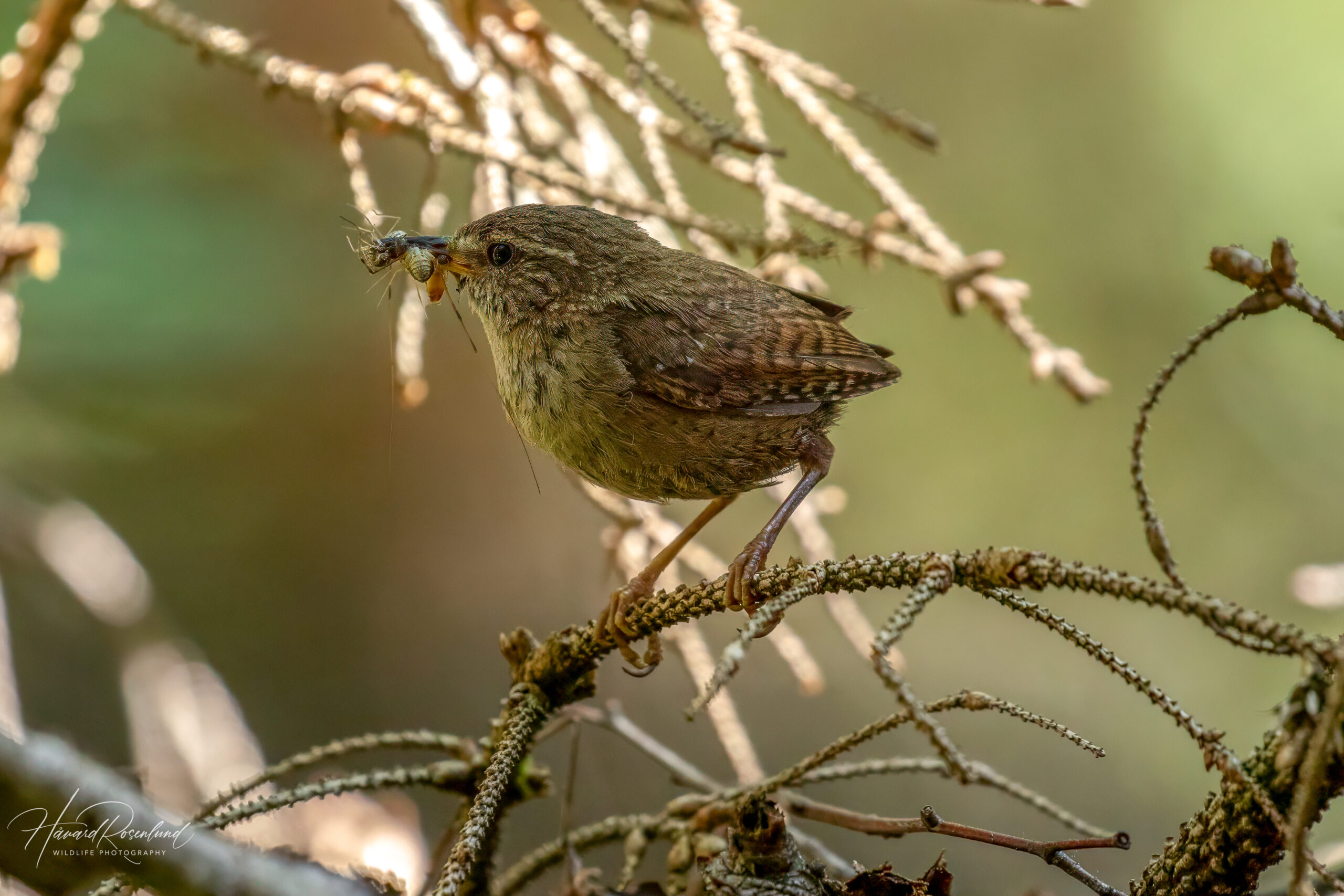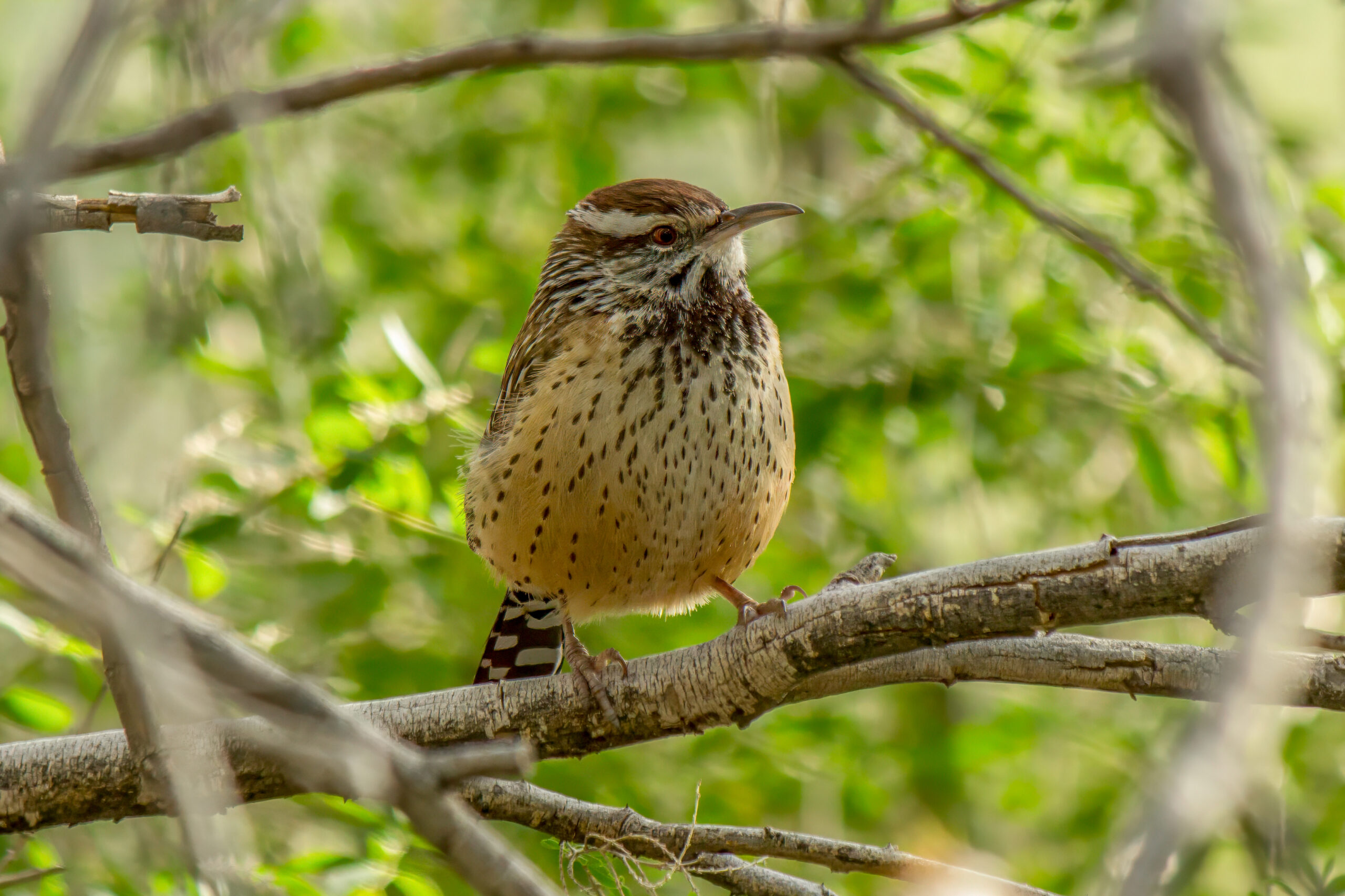Description
The Eurasian wren (Troglodytes troglodytes), also known as northern wren, is a small, charismatic bird known for its loud song and energetic behavior. It is the only species of wren found in the Old World, inhabiting much of Europe, parts of Asia, and North Africa. It exhibits a distinctive stubby appearance, with a length of about 9 to 10.5 cm (3.5 to 4.1 inches) and a weight of 8 to 13 grams (0.28 to 0.46 ounces). The bird has a short, narrow tail, often held upright, and a fine, slightly downcurved bill. Its plumage is predominantly rich brown, intricately barred with darker shades, giving it excellent camouflage against the forest floor. The Eurasian wren is easy to distinguish from other bird species within its range by its small size, distinct song, and characteristic appearance.
Diet & habitat
Primarily insectivorous, the Eurasian wren feeds on a diet of insects and spiders. It is known for its agility, often seen flitting through underbrush and foliage to catch prey. Its foraging technique is quite acrobatic, involving quick movements among dense vegetation to dislodge and capture small invertebrates. The bird prefers habitats with dense cover, such as thick undergrowth, hedgerows, and forests, where it can easily hide and seek food. Despite its small size, it is a fierce forager, capable of extracting insects from their hiding spots in deep crevices and under bark.
Migration
Eurasian wrens are largely resident throughout their range, but populations in the colder northern regions exhibit migratory behavior. During autumn, individuals from these areas move southwards to escape the harsh winter conditions. Migration patterns are relatively short-range, and the birds return to their breeding territories in early spring.
Nesting
Breeding season for the Eurasian wren commences in April or May. When establishing territories and attracting mates, male wrens sing a loud and characteristic song, which is one of the loudest relative to body size among birds. The male is also known for constructing several “dummy” nests, which are then presented to the female for selection. Once a nest is chosen, the female lines it with feathers and soft materials. These nests are often situated in concealed locations, such as crevices in walls, dense vegetation, or tree hollows. The female lays 5 to 8 eggs, which she incubates for about 14 to 18 days. Chicks fledge approximately 15 to 20 days after hatching but remain dependent on parental care for a few weeks thereafter. Despite its small size, the Eurasian wren exhibits aggressive behavior towards intruders and rivals during the breeding season.
Status
The Eurasian wren is classified as least concern by the IUCN Red List, indicating that it is not currently at risk of extinction. This species benefits from its wide distribution and adaptability to various habitats, including urban areas. However, it is susceptible to severe winters, which can significantly impact local populations.




